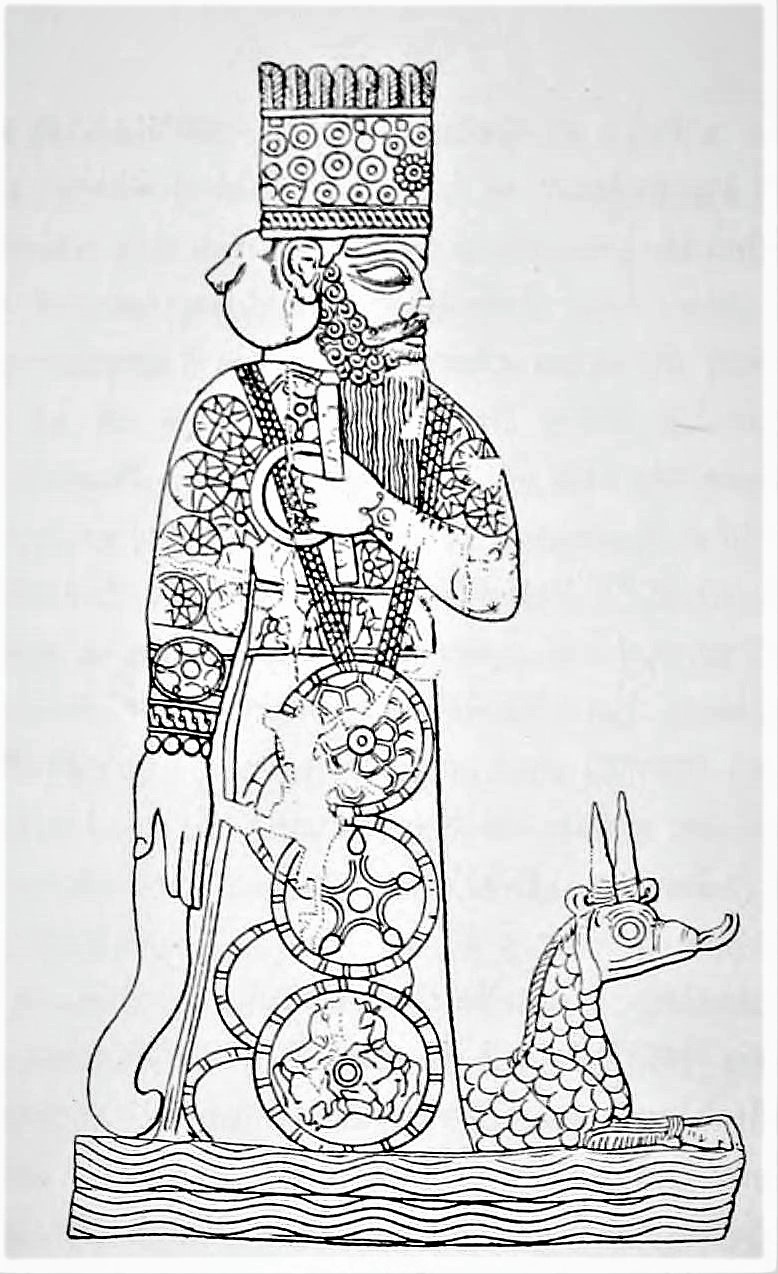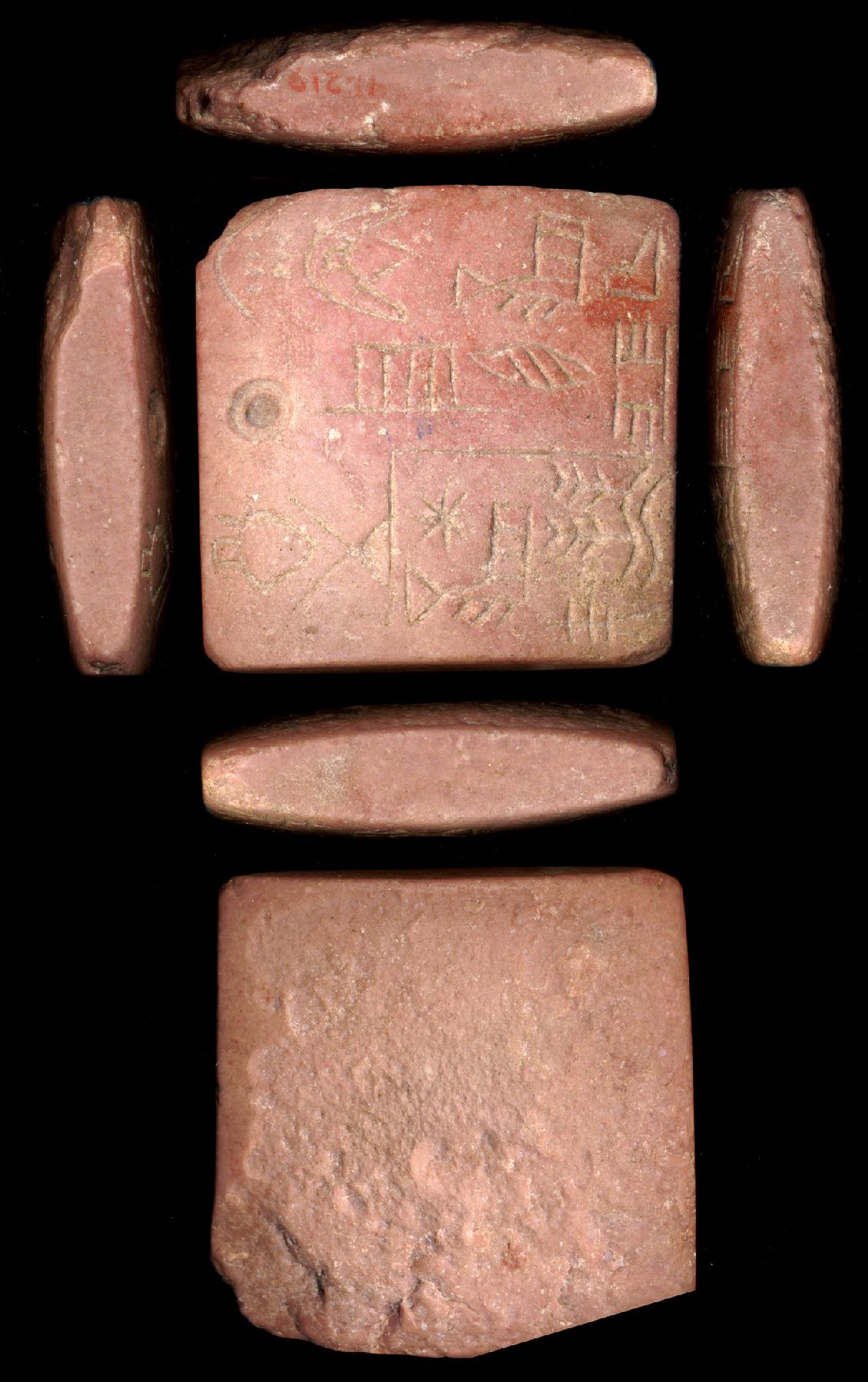|
Kilili
In ancient Mesopotamian religion, Kilili, ''ki.li.li;'' was a female demon of Sumerian language, Sumerian origin, likely associated with owls. She is also attested as a minor goddess who functioned as a servant of Ishtar. Function and Associations Kilili's name is that of a bird, most likely an owl. In one document she is equated with ''dingir, dab-ba-šú-šú'', meaning "she who leans on the window" in Sumerian. She could be called as "queen of the windows", "the one of haunted places" and it assumed she was imagined as an owl-demoness. She was usually affiliated with Ishtar. Direct identification between them, while attested, is limited to a single late esoteric explanatory text. In the god list An = Anum she is one of Ishtar's eighteen messengers (''lúkin-gi-a''), alongside other similar figures such as Barīrītu ("she who comes at dusk") and Abtagigi. Kilili under the name ''dab-ba-šú-šú'' could be considered as a complement to the goddess Abtagigi, whose name means ... [...More Info...] [...Related Items...] OR: [Wikipedia] [Google] [Baidu] |
Ancient Mesopotamian Religion
Mesopotamian religion refers to the religion, religious beliefs and practices of the civilizations of ancient Mesopotamia, particularly Sumer, Akkadian Empire, Akkad, Assyria and Babylonia between circa 6000 BC and 400 AD, after which they largely gave way to Syriac Christianity practiced by today's Assyrian people, Assyrians. The religious development of Mesopotamia and Mesopotamian culture in general, especially in the south, was not particularly influenced by the movements of the various peoples into and throughout the area. Rather, Mesopotamian religion was a consistent and coherent tradition which adapted to the internal needs of its adherents over millennia of development. The earliest undercurrents of Mesopotamian religious thought are believed to have developed in Mesopotamia in the sixth millennium BC, coinciding with the region beginning to be permanently settled. The earliest evidence of Mesopotamian religion date to the mid-fourth millennium BC, coinciding with the ... [...More Info...] [...Related Items...] OR: [Wikipedia] [Google] [Baidu] |
Neo-Babylonian Empire
The Neo-Babylonian Empire or Second Babylonian Empire, historically known as the Chaldean Empire, was the last polity ruled by monarchs native to Mesopotamia. Beginning with the coronation of Nabopolassar as the King of Babylon in 626 BC and being firmly established through the fall of the Neo-Assyrian Empire in 612 BC, the Neo-Babylonian Empire was conquered by the Achaemenid Persian Empire in 539 BC, marking the collapse of the Chaldean dynasty less than a century after its founding. The defeat of the Neo-Assyrian Empire and subsequent transfer of power to Babylon marked the first time that the city, and southern Mesopotamia in general, had risen to dominate the ancient Near East since the collapse of the Old Babylonian Empire (under Hammurabi) nearly a thousand years earlier. The period of Neo-Babylonian rule thus saw unprecedented economic and population growth throughout Babylonia, as well as a renaissance of culture and artwork as Neo-Babylonian kings conducted massi ... [...More Info...] [...Related Items...] OR: [Wikipedia] [Google] [Baidu] |
Inanna
Inanna, also sux, 𒀭𒊩𒌆𒀭𒈾, nin-an-na, label=none is an ancient Mesopotamian goddess of love, war, and fertility. She is also associated with beauty, sex, divine justice, and political power. She was originally worshiped in Sumer under the name "Inanna", and later by the Akkadians, Babylonians, and Assyrians under the name Ishtar, (occasionally represented by the logogram ). She was known as the " Queen of Heaven" and was the patron goddess of the Eanna temple at the city of Uruk, which was her main cult center. She was associated with the planet Venus and her most prominent symbols included the lion and the eight-pointed star. Her husband was the god Dumuzid (later known as Tammuz) and her , or personal attendant, was the goddess Ninshubur (who later became conflated with the male deities Ilabrat and Papsukkal). Inanna was worshiped in Sumer at least as early as the Uruk period ( 4000 BCE – 3100 BCE), but she had little cult activity before the ... [...More Info...] [...Related Items...] OR: [Wikipedia] [Google] [Baidu] |
Old Babylonian Period
The Old Babylonian Empire, or First Babylonian Empire, is dated to BC – BC, and comes after the end of Sumerian power with the destruction of the Third Dynasty of Ur, and the subsequent Isin-Larsa period. The chronology of the first dynasty of Babylonia is debated, since there is a Babylonian King List A and also a Babylonian King List B. In this chronology, the regnal years of List A are used due to their wide usage. The reign lengths given in List B are longer, generally speaking. Hardship of searching for origins of the First Dynasty The actual origins of the First Babylonian dynasty are rather hard to pinpoint with great certainty — simply because Babylon itself, due to a high water table, yields very few archaeological materials intact. Thus, the evidence that survived throughout the years includes written records such as royal and votive inscriptions, literary texts, and lists of year-names. The minimal amount of evidence in economic and legal documents makes it diff ... [...More Info...] [...Related Items...] OR: [Wikipedia] [Google] [Baidu] |
The Burney Relief
The Burney Relief (also known as the Queen of the Night relief) is a Mesopotamian terracotta plaque in high relief of the Isin-Larsa period or Old- Babylonian period, depicting a winged, nude, goddess-like figure with bird's talons, flanked by owls, and perched upon two lions. The relief is displayed in the British Museum in London, which has dated it between 1800 and 1750 BCE. It originates from southern Mesopotamia, but the exact find-site is unknown. Apart from its distinctive iconography, the piece is noted for its high relief and relatively large size making it a very rare survival from the period. The authenticity of the object has been questioned from its first appearance in the 1930s, but opinion has generally moved in its favour over the subsequent decades. Provenance Initially in the possession of a Syrian dealer, who may have acquired the plaque in southern Iraq in 1924, the relief was deposited at the British Museum in London and analysed by Dr. H.J. Plender ... [...More Info...] [...Related Items...] OR: [Wikipedia] [Google] [Baidu] |
British Museum Queen Of The Night
British may refer to: Peoples, culture, and language * British people, nationals or natives of the United Kingdom, British Overseas Territories, and Crown Dependencies. ** Britishness, the British identity and common culture * British English, the English language as spoken and written in the United Kingdom or, more broadly, throughout the British Isles * Celtic Britons, an ancient ethno-linguistic group * Brittonic languages, a branch of the Insular Celtic language family (formerly called British) ** Common Brittonic, an ancient language Other uses *'' Brit(ish)'', a 2018 memoir by Afua Hirsch *People or things associated with: ** Great Britain, an island ** United Kingdom, a sovereign state ** Kingdom of Great Britain (1707–1800) ** United Kingdom of Great Britain and Ireland (1801–1922) See also * Terminology of the British Isles * Alternative names for the British * English (other) * Britannic (other) * British Isles * Brit (other) * Briton ( ... [...More Info...] [...Related Items...] OR: [Wikipedia] [Google] [Baidu] |
Uruk
Uruk, also known as Warka or Warkah, was an ancient city of Sumer (and later of Babylonia) situated east of the present bed of the Euphrates River on the dried-up ancient channel of the Euphrates east of modern Samawah, Al-Muthannā, Iraq.Harmansah, 2007 Uruk is the type site for the Uruk period. Uruk played a leading role in the early urbanization of Sumer in the mid-4th millennium BC. By the final phase of the Uruk period around 3100 BC, the city may have had 40,000 residents, with 80,000-90,000 people living in its environs, making it the largest urban area in the world at the time. The legendary king Gilgamesh, according to the chronology presented in the ''Sumerian King List'' (henceforth ''SKL''), ruled Uruk in the 27th century BC. The city lost its prime importance around 2000 BC in the context of the struggle of Babylonia against Elam, but it remained inhabited throughout the Seleucid (312–63 BC) and Parthian (227 BC to 224 AD) periods until it was fina ... [...More Info...] [...Related Items...] OR: [Wikipedia] [Google] [Baidu] |
Gula (goddess)
Gula (Sumerian: "the great") was a Mesopotamian goddess of medicine, portrayed as a divine physician and midwife. Over the course of the second and first millennia BCE, she became one of the main deities of the Mesopotamian pantheon, and eventually started to be viewed as the second highest ranked goddess after Ishtar. She was associated with dogs, and could be depicted alongside these animals, for example on '' kudurru'' (inscribed boundary stones), and receive figurines representing them as votive offerings. While Gula was initially regarded as unmarried, in the Kassite period she came to be associated with Ninurta. In Babylon his role could also be fulfilled by Mandanu, while the god list '' An = Anum'' links Gula with Pabilsag and Abu. The circle of deities closely associated with her also included Damu and Gunura, who eventually started to be regarded as her children, as well as her sukkal (divine vizier) Urmašum, who might have been imagined as a dog-like being. Thr ... [...More Info...] [...Related Items...] OR: [Wikipedia] [Google] [Baidu] |
Sumerian Language
Sumerian is the language of ancient Sumer. It is one of the oldest attested languages, dating back to at least 3000 BC. It is accepted to be a local language isolate and to have been spoken in ancient Mesopotamia, in the area that is modern-day Iraq. Akkadian, a Semitic language, gradually replaced Sumerian as a spoken language in the area around 2000 BC (the exact date is debated), but Sumerian continued to be used as a sacred, ceremonial, literary and scientific language in Akkadian-speaking Mesopotamian states such as Assyria and Babylonia until the 1st century AD. Thereafter it seems to have fallen into obscurity until the 19th century, when Assyriologists began deciphering the cuneiform inscriptions and excavated tablets that had been left by its speakers. Stages The history of written Sumerian can be divided into several periods: *Archaic Sumerian – 31st–26th century BC *Old or Classical Sumerian – 26th–23rd century BC *Neo-Sumerian – 23rd– ... [...More Info...] [...Related Items...] OR: [Wikipedia] [Google] [Baidu] |
Neo-Assyrian Period
The Neo-Assyrian Empire was the fourth and penultimate stage of ancient Assyrian history and the final and greatest phase of Assyria as an independent state. Beginning with the accession of Adad-nirari II in 911 BC, the Neo-Assyrian Empire grew to dominate the ancient Near East throughout much of the 8th and 7th centuries BC, becoming the largest empire in history up to that point. Because of its geopolitical dominance and ideology based in world domination, the Neo-Assyrian Empire is by many researchers regarded to have been the first world empire in history. At its height, the empire was the strongest military power in the world and ruled over all of Mesopotamia, the Levant and Egypt, as well as portions of Anatolia, Arabia and modern-day Iran and Armenia. The early Neo-Assyrian kings were chiefly concerned with restoring Assyrian control over much of northern Mesopotamia and Syria, since significant portions of the preceding Middle Assyrian Empire had been lost durin ... [...More Info...] [...Related Items...] OR: [Wikipedia] [Google] [Baidu] |






